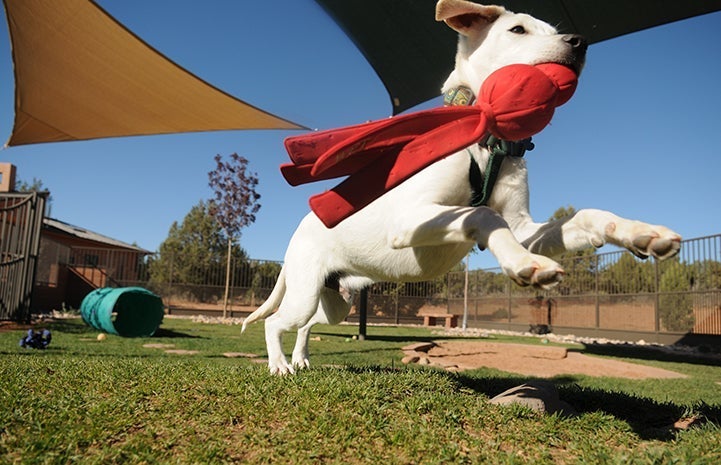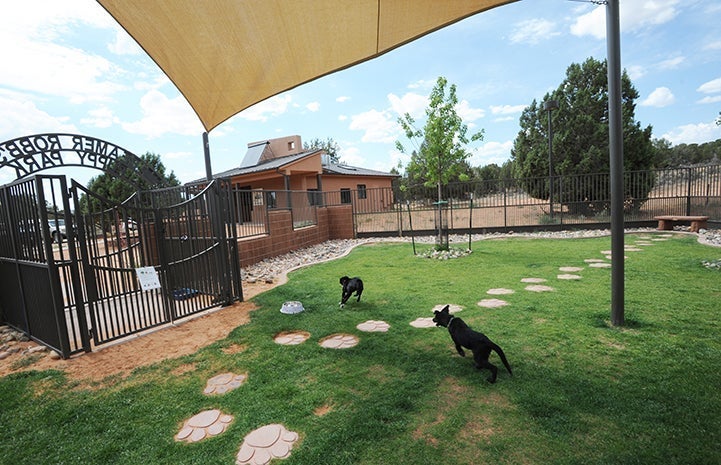
Dog Park Etiquette Rules: FAQs
Visiting a dog park can be a fun thing to do with your dog — allowing your pup to meet other dogs, practice social skills, and get exercise. But for some, a dog park might be an anxiety-provoking or even dangerous prospect. To help make your trip as safe and fun as possible, here are some frequently asked questions about dog park etiquette rules.
How do I know if my dog will be OK at a dog park?
A dog who has a history of playing well with other dogs can be a good candidate for a dog park visit. If you know that your dog has fought with or attacked other dogs, however, it’s best not to take them to a dog park. Some dogs simply don’t like other dogs.
If your dog’s social history with other dogs is unknown, try introducing them via a private play date to one other very social dog first, and watch their body language closely. The dog park is not a safe place to test the social skills of a dog with an unknown history.
What makes a good dog park?
Good dog parks are well-maintained and have secure fencing and air locks (enclosed entry/exit areas between two gates). The very best dog parks also have posted rules. It’s a good sign when a dog park requires that all dogs entering are licensed and vaccinated. Some dog parks even require that dogs are pre-registered (in other words, you need a pass to get in) and are spayed or neutered. Although the rules might seem onerous, the better-regulated dog parks are usually safer.
Should small dogs go to dog parks?
Very small dogs should go to special parks only for dogs their size to keep the play safe. Make sure the fencing is secure for the size of your dog.


See how your community is doing
What is the etiquette of dog parks?
A good dog park will have clear (and ideally posted) etiquette rules for both humans and dogs. As in any social situation, being polite and considerate goes a long way toward keeping everyone safe and happy.
These rules might include whether food or toys are allowed and whether there is a restriction on small children. Even if kids are allowed, it’s never a good idea to take small children to a dog park because they can get scared, knocked down, or hurt by dogs running around and playing.
Other good dog park etiquette rules include keeping your dog on leash until you are safely in the air lock and removing your dog’s leash before entering the play area.
Furthermore, the humans who use the dog park matter just as much as the dogs. Dogs have a way of bringing people together, and most dog people are empathetic and respectful. Your dog park might have a lot of regular attendees, which can be great because it keeps things predictable. Try to be as inviting as possible to newcomers, though, as all well-socialized dogs can benefit from an expanded circle of polite canine playmates.
How can disagreements at the dog park be resolved?
As with any social circumstance, there will inevitably be disagreements at dog parks, both between dogs and between humans. It’s best to think of these as opportunities to find ways to keep everyone safe and happy.
Sometimes a dog will “disagree” with another dog about whether play is appropriate. This can lead to squabbles, which do not necessarily lead to fights. In fact, a brief scuffle with growling or barking, with little to no physical contact, can be an opportunity for dogs to learn from each other. With that said, any dog who becomes agitated or upset — or who starts fights — should be removed from the park.
The most important thing for humans at the park to agree on is that everyone, dogs and humans alike, should feel safe there. If you are uncomfortable with the style or intensity of play, your dog might start to feel uncomfortable, too. The best thing to do in a situation like that is to ask for a “consent test”: Separate the dogs briefly, and then if both want to go back to playing, let them. Separate them by calling your dog away if you can. It’s important never to hold onto a leash at the dog park because your dog loses the ability to move away and might become a target.

What social opportunities are there for my dog besides a dog park?
If you and your dog decide that going to the dog park isn’t for you, there are alternatives. You can schedule private playdates with friends’ dogs or participate in classes with a relationship-based dog trainer that include free play or social time. Another option is to have your dog go to a well-run daycare facility periodically. It’s an opportunity for your dog to meet other dogs in a safely supervised environment.
